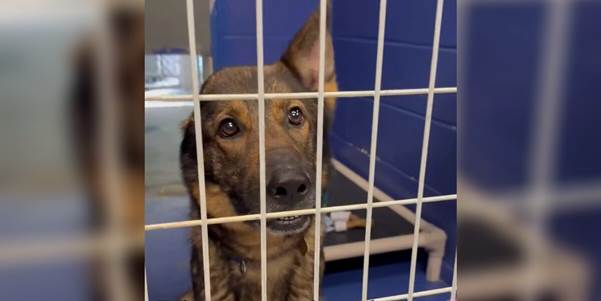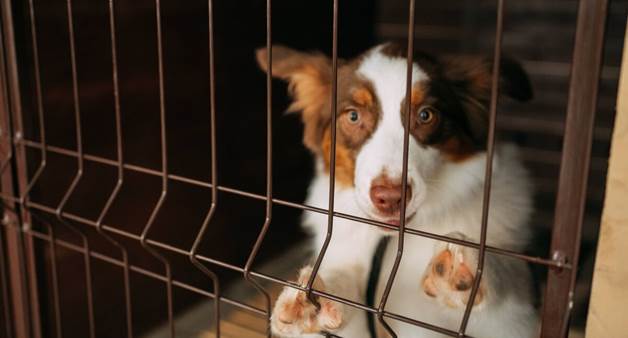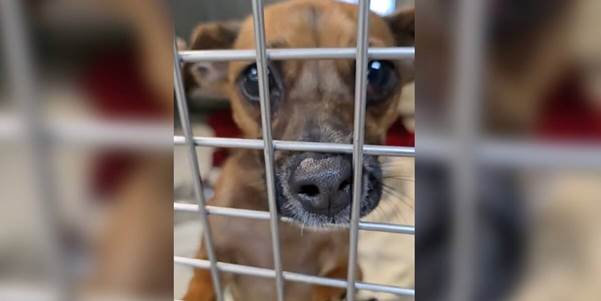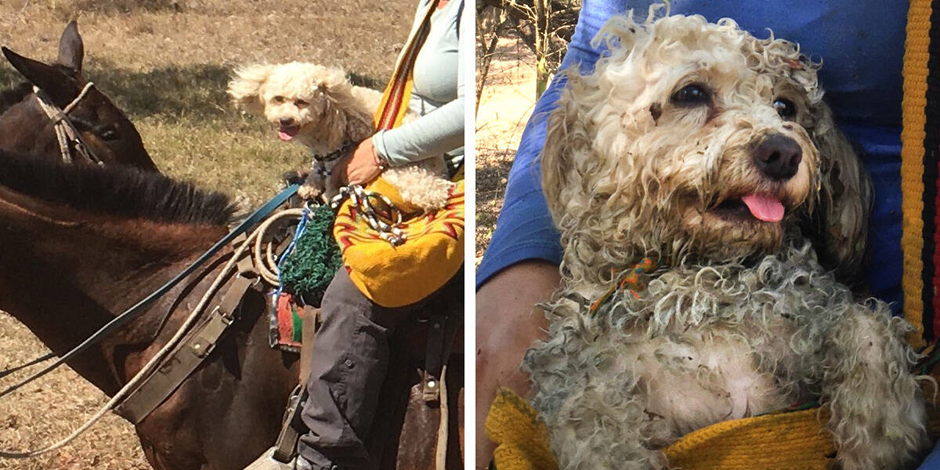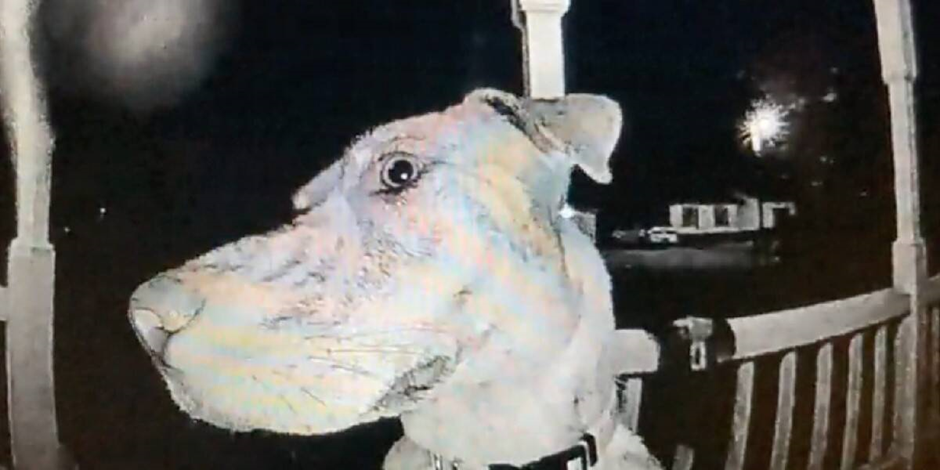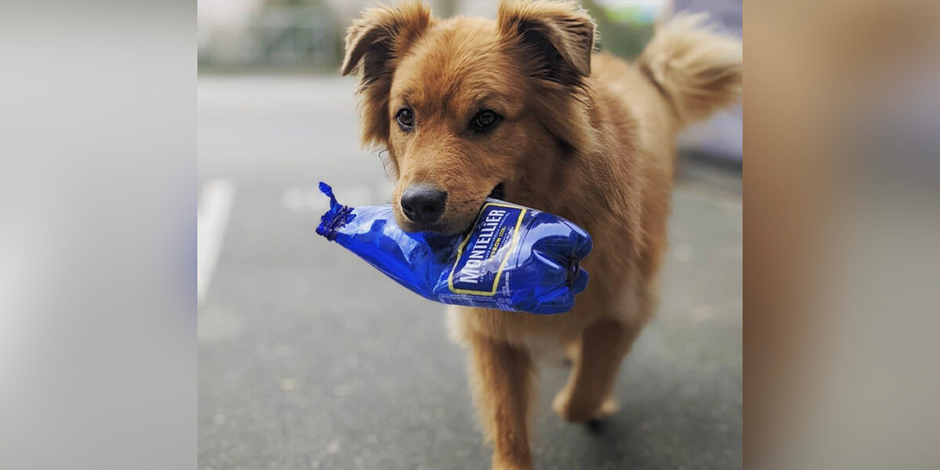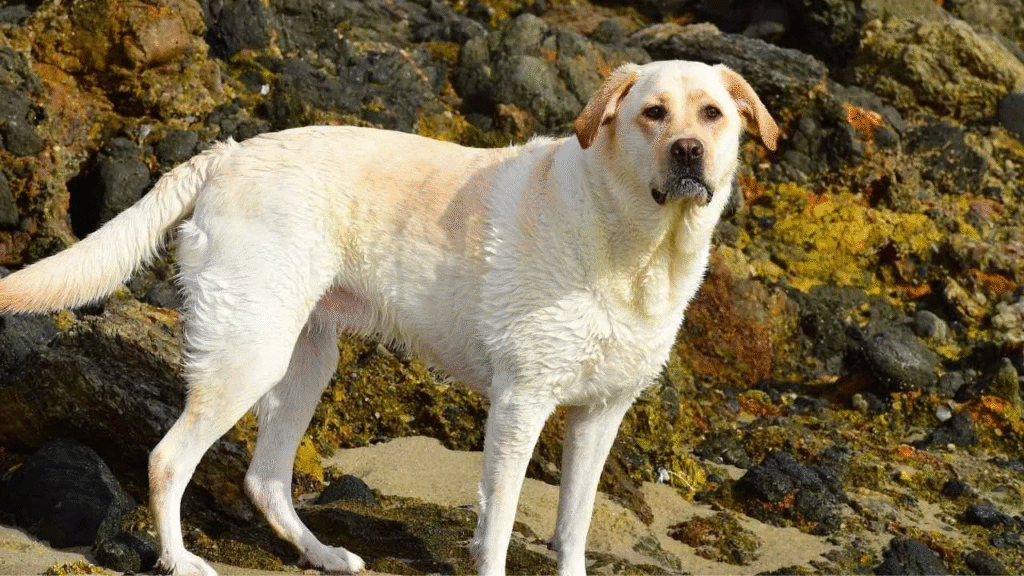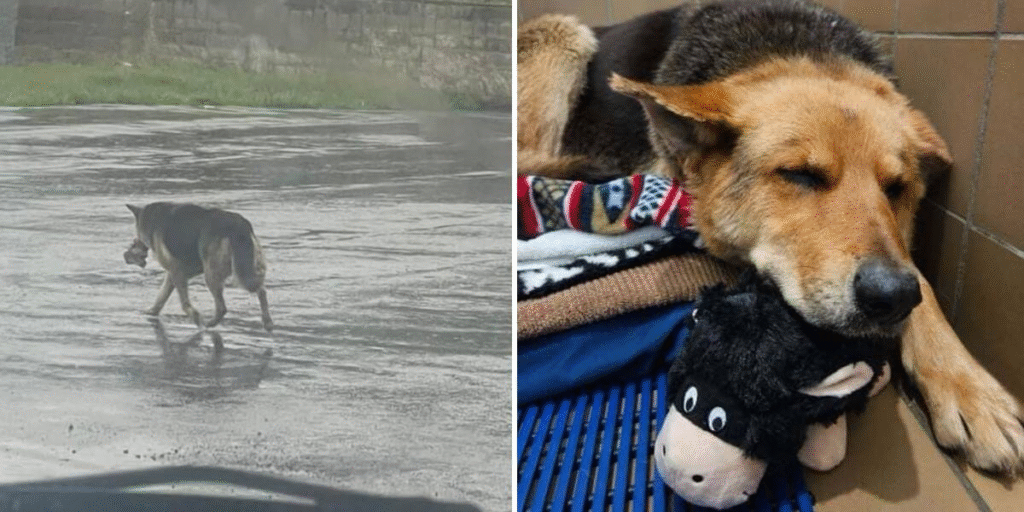“Unicorn Dog” Left Heartbroken After No One Comes to Her Adoption Event
In the small town of Eastford, Connecticut, animal control officers came across a sight that made them stop in their tracks. Wandering down a quiet roadside was a 4-year-old dog with the kindest brown eyes — and just one ear sticking up right in the middle of her head. Her name was Ginger, and her unusual look gave her the nickname “The Unicorn Dog.” Despite her magical appearance, Ginger’s life hadn’t been easy. What began as a routine animal control rescue turned into an emotional dog story that would capture hearts around the world. It was a chilly morning when officers spotted Ginger wandering aimlessly, her fur matted and her body trembling from exhaustion. She had no collar, no microchip — just the quiet determination of a dog trying to survive. When the officers gently approached her, she didn’t bark or growl. Instead, she wagged her tail softly and looked up at them as if to say, “I’m tired, but I’m still here.” They quickly brought her to safety and began searching for her family. Surely, they thought, someone out there must be missing this one-of-a-kind one-eared dog. After a few phone calls and some digging, animal control finally located Ginger’s owners. The officers expected tears of relief and gratitude — but what they heard instead was devastating. Ginger’s family said they didn’t want her back. They claimed she “escaped too often” and was “too much trouble.” The officers were stunned. How could anyone give up such a sweet, gentle soul — especially one so special? The phone call ended with a quiet kind of sadness. Ginger was officially abandoned. That day, the officers promised themselves that this little rescue dog from Eastford, Connecticut would never be unwanted again. As Ginger recovered under the care of animal control, her story began to spread. The staff couldn’t help but smile whenever they looked at her. Her unique dog appearance — one ear perfectly centered on her head — made her look like she had a tiny unicorn horn. “Everyone who sees her says she’s magical,” one rescuer said. “She’s proof that being different is beautiful.” They began sharing her photos on social media with the hashtag #UnicornDog, hoping her unusual look would attract the perfect family. Soon, people everywhere fell in love with Ginger’s sweet face and inspiring story. After weeks of care and growing attention online, animal control arranged an adoption event for Ginger. Flyers went out across the community: “Meet Ginger — the one-eared Unicorn Dog looking for her forever home!” Staff decorated her kennel with pink hearts and ribbons. They brushed her golden fur, gave her a new collar, and whispered words of encouragement before the event began. As the doors opened, families streamed in to meet dogs and cats in need. Ginger sat quietly, tail wagging, eyes full of hope. But as the hours passed, people walked by — smiling at her, snapping pictures — but no one stopped to fill out an adoption form. By the end of the day, the crowd was gone. The room was quiet again. And so was Ginger. “She just sat there,” one volunteer said softly. “She watched everyone leave, as if she was wondering why nobody picked her.” It was a moment of true dog adoption heartbreak. Later that evening, one of the shelter staff posted a photo of Ginger from the event. She was sitting patiently, her single ear perked up, eyes filled with a mix of hope and confusion. The caption read: “Our sweet unicorn dog waited all day for someone to love her. No one came. But we know her perfect match is out there somewhere.” Within hours, the post went viral. Thousands of comments poured in from people all over the world. “Who could say no to that face?” one person wrote.“She’s a real-life unicorn — she just needs the right person to see her magic,” said another. Local news outlets picked up the story, calling it “the most touching abandoned dog story of the year.” Veterinarians believe Ginger may have lost one of her ears due to an injury earlier in life, but it healed perfectly, giving her that adorable unicorn-like appearance. Despite everything she’d endured — rejection, abandonment, loneliness — Ginger remained gentle and trusting. Her resilience made her an inspiration to the shelter team and to thousands online who saw themselves in her story: broken, overlooked, but still shining. Just a few days after the post went viral, something incredible happened. A woman named Laura, who lived two towns over, saw Ginger’s photo and immediately felt a connection. She had lost her senior dog a year before and wasn’t sure she was ready to adopt again — until she saw Ginger’s face. “She looked so hopeful, even though no one had chosen her,” Laura said. “I just knew she needed me — and honestly, I needed her too.” When Laura arrived at the shelter, Ginger was resting in her kennel. As soon as their eyes met, Ginger’s tail began to wag furiously. “She just lit up,” said one volunteer. “It was like she knew her person had finally arrived.” That day, Ginger’s life changed forever. Laura took Ginger home and gave her everything she’d been missing — love, warmth, patience, and a family that saw her not as a burden, but as a blessing. In her new home, Ginger loves snuggling on the couch, going for walks, and greeting everyone she meets with a wagging tail and her signature unicorn ear. She’s even become a little celebrity in her neighborhood. Kids point and call her “the unicorn dog,” and Ginger happily soaks up the attention. “She’s brought so much joy into my life,” Laura shared. “She’s a reminder that the ones who’ve been through the hardest things often have the biggest hearts.” Ginger’s story reminds us that every rescue dog — no matter how they look or what they’ve been through — deserves love. Her journey from abandonment to adoption shows how
“Unicorn Dog” Left Heartbroken After No One Comes to Her Adoption Event Read More »

